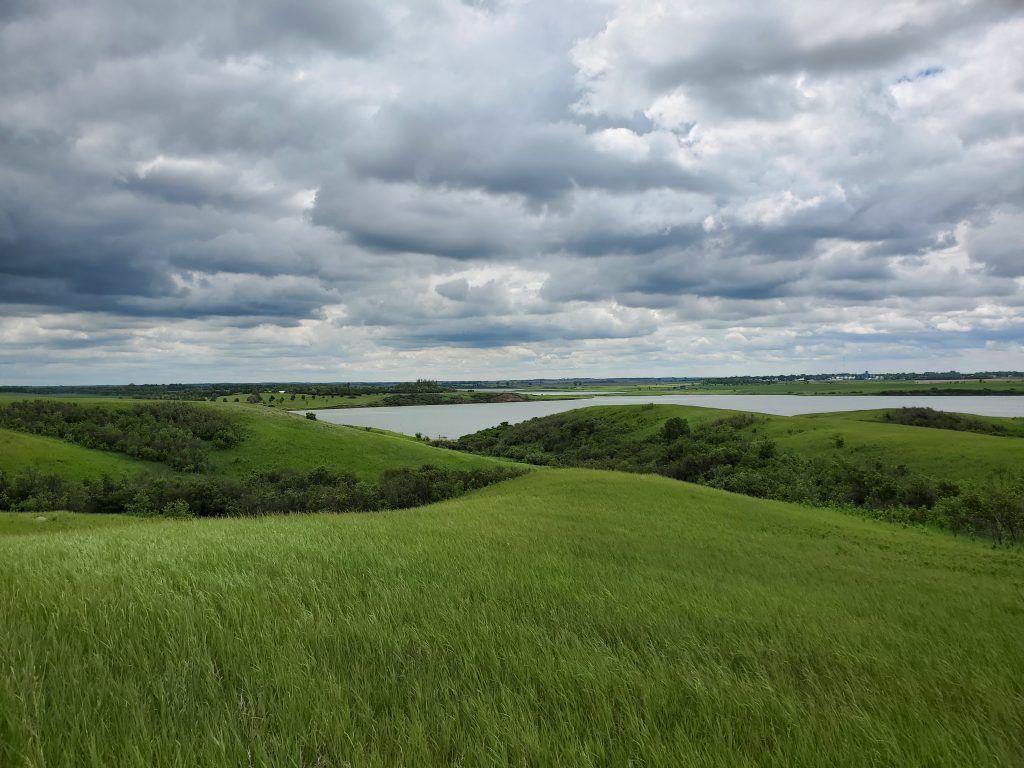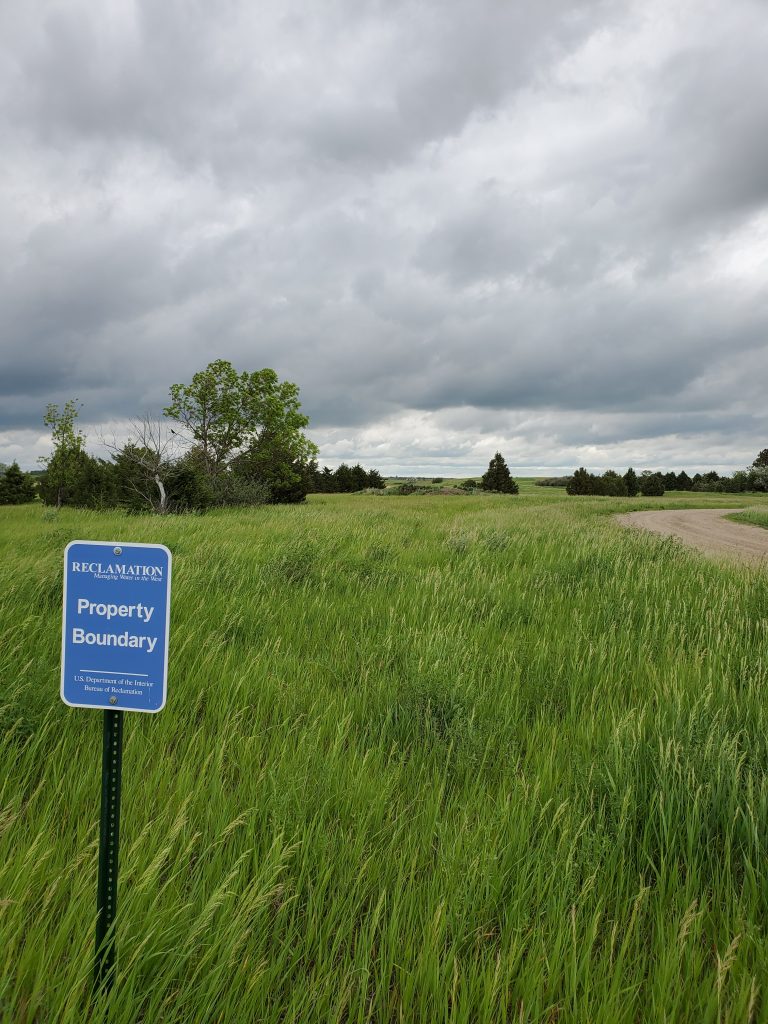Our Stories
NCTA + the U.S. Bureau of Reclamation
The U.S. Bureau of Reclamation (BOR) is a federal agency prevalent in the Western United States, but only found along the North Country National Scenic Trail (NCNST) in North Dakota.
The BOR manages, develops, and protects water and related resources in an environmentally and economically sound manner in the interest of the American public. It is also the nation’s largest wholesale water supplier, operating 338 reservoirs with a total storage capacity of 140 million acre-feet (an acre-foot = 325,851 gallons of water, which supplies enough water for a family of four for one year). It provides one out of five (approximately 140,000) Western U.S. farmers with irrigation water for 10 million farmland acres. The BOR is also the second largest producer of hydropower in the country and operates 53 hydroelectric powerplants that annually produced, on average, 40 billion kilowatt-hours for the last 10 years.
 With its partners, the BOR manages 249 recreation sites that have 90 million visits annually. These management and recreation activities contribute $63.9 billion in economic output, and support over 450,000 jobs. Over 90 million people visit its 7.8 million acres annually. For comparison, the National Park Service (NPS) attracts almost 300 million visitors to its 83 million acres annually.
With its partners, the BOR manages 249 recreation sites that have 90 million visits annually. These management and recreation activities contribute $63.9 billion in economic output, and support over 450,000 jobs. Over 90 million people visit its 7.8 million acres annually. For comparison, the National Park Service (NPS) attracts almost 300 million visitors to its 83 million acres annually.
So what does the BOR have to do with the NCNST? The Garrison Diversion project.
“The Garrison Diversion Unit would divert water from Lake Sakakawea, formed by Garrison Dam on the Missouri River. The water would be used for irrigation of about one million acres in east-central North Dakota, municipal and industrial use in several towns and cities, fish and wildlife, and recreation in Devils Lake and other impoundments. Flood control and pollution abatement are other purposes. Initial stage construction was authorized in August 1965 (79 Stat. 433) to irrigate about 250,000 acres. Principal supply works include the 2,050-cubic-foot-per-second capacity Snake Creek Pumping Plant, Audubon Lake, the 1,950-cubic-foot-per-second McClusky Canal, and the Lonetree Reservoir at the headwaters of the Sheyenne River. Power for pumping will be supplied from Pick-Sloan Missouri River Basin Program facilities (Garrison Dam).” (U.S. Bureau of Reclamation)
In essence, the Garrison Diversion project provides the route of the NCNST from Lake Audubon (the part of Lake Sakakawea located east of U.S. Highway 83) east along the McClusky Canal and across the Continental Divide, through Lonetree Wildlife Management Area, and then east along the New Rockford Canal to near the town of New Rockford. This represents about 145 miles of the NCNST’s 440 miles in North Dakota.
 About five years ago, the North Country Trail Association (NCTA) and NPS entered into an MOU with the BOR when it seemed the New Rockford Canal might be disposed of. In the agreement, the BOR agreed to work with the NCTA and NPS to improve the Trail on their lands. With the formation of the NCTA Central Flyway Chapter a couple of years ago, this work has intensified of late.
About five years ago, the North Country Trail Association (NCTA) and NPS entered into an MOU with the BOR when it seemed the New Rockford Canal might be disposed of. In the agreement, the BOR agreed to work with the NCTA and NPS to improve the Trail on their lands. With the formation of the NCTA Central Flyway Chapter a couple of years ago, this work has intensified of late.
Numerous improvements along the NCNST on BOR-owned lands couldn’t have happened without the active support of the BOR. Recent improvements include:
- Relocations of the NCNST within Lonetree Wildlife Management Area to get the NCNST off of two-track roads and onto the adjacent prairie, and to avoid wetland crossings. These have greatly enhanced the trail experience by eliminating straight road segments that can be seasonally wet.
- Development of 12 miles of new off-road NCNST within the Chain of Lakes Recreation Area along the McClusky Canal south of Mercer. The NCNST is now off the gravel road along the canal and wanders through the prairie. This work was completed by an Eagle Scout project in the fall of 2022.
Future projects include:
- Completing a couple short relocations in Lonetree to move the last of the roadwalks off-road, and to avoid wetland impacts.
- Constructing short puncheons to improve the sustainability of the NCNST where relocations are not possible.
- Possibly relocating the NCNST off of the McClusky Canal and onto the Lake Brekken-Holmes Recreation Area near Turtle Lake.
“The BOR has proven to be a great partner since they are a can-do agency. They are willing to meet with us, discuss potential solutions to problems, and to tackle the NEPA reviews in a timely fashion. It has been a pleasure to work with Andrea Gue and the other BOR staff in making these recent NCNST improvements.” (Matthew Davis, NCTA Regional Trail Coordinator)
